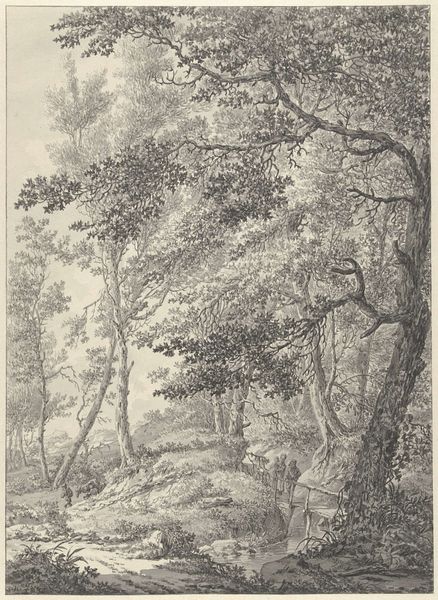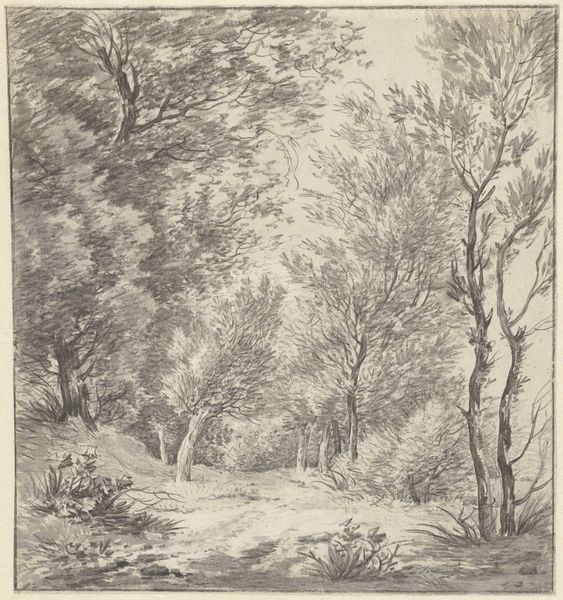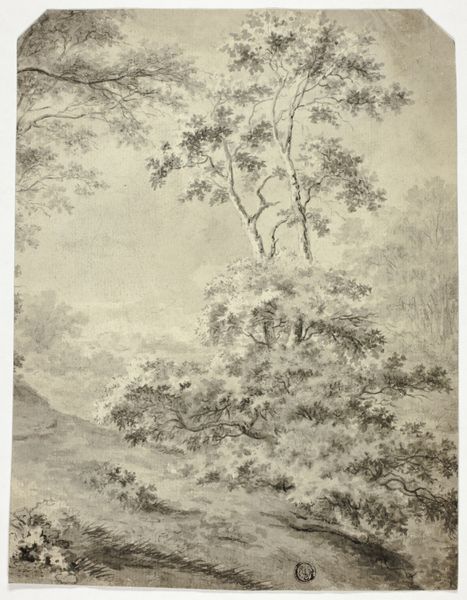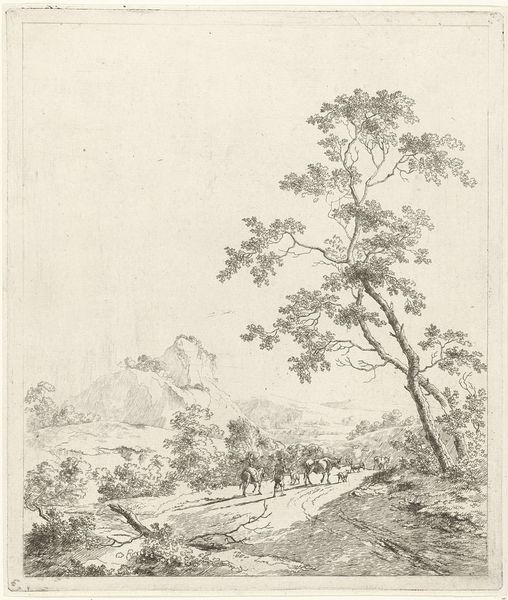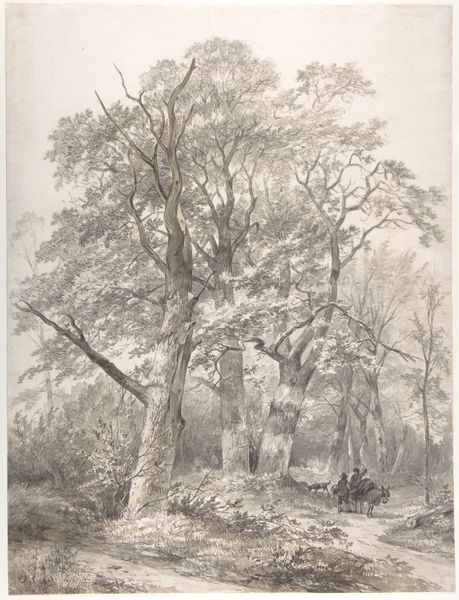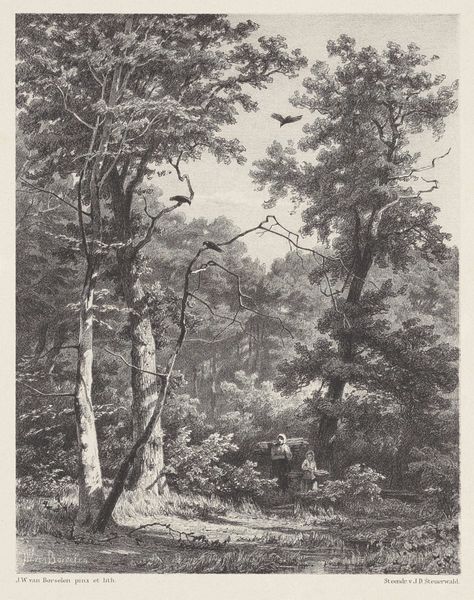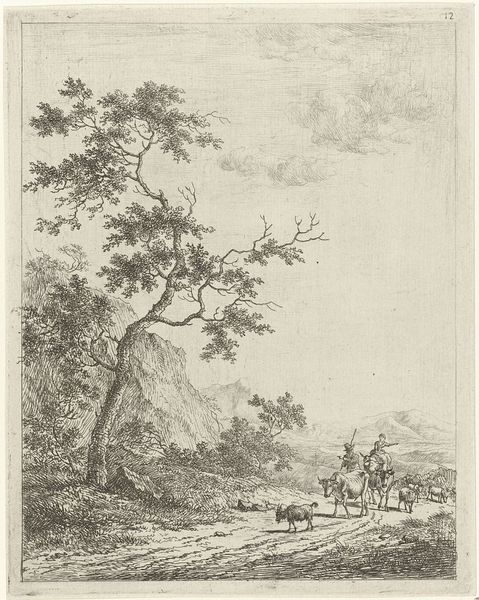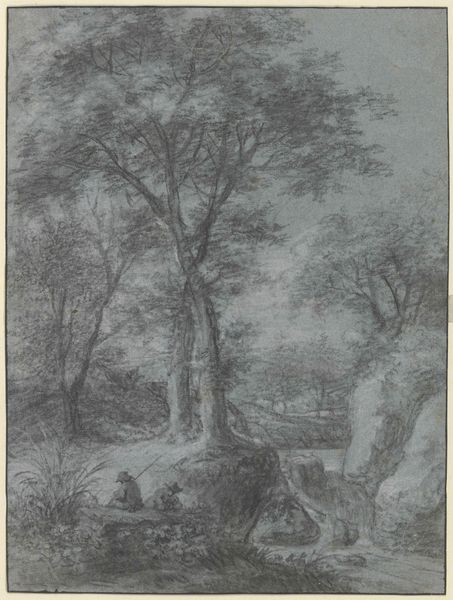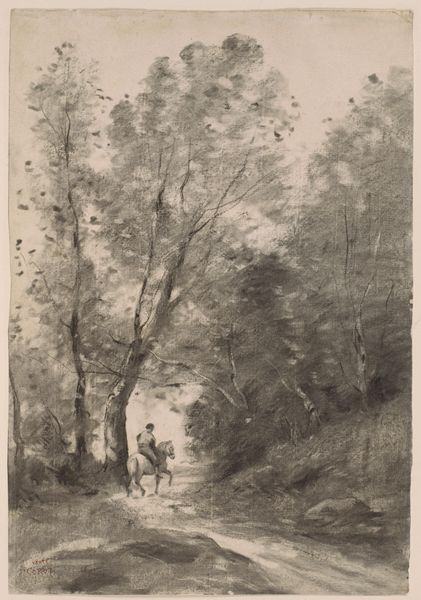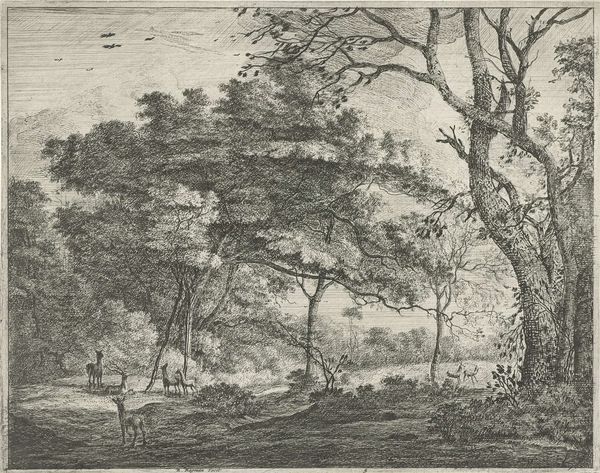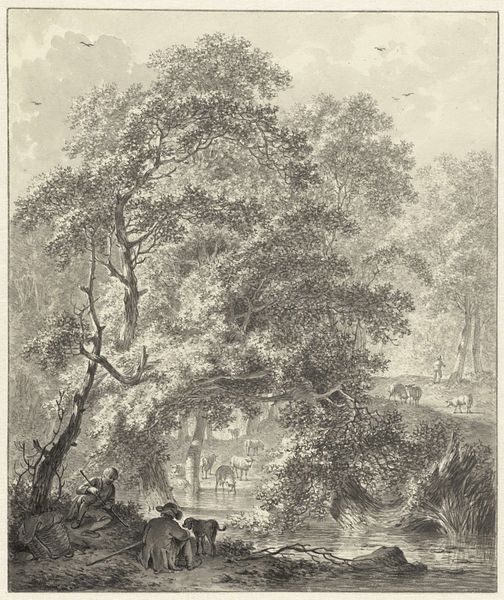
Weg in een bosachtige streek, waarop drie reizigers naderen 1774 - 1808
0:00
0:00
drawing, ink, pencil, pen
#
drawing
#
landscape
#
figuration
#
ink
#
romanticism
#
pencil
#
pen
#
academic-art
Dimensions: height 305 mm, width 267 mm
Copyright: Rijks Museum: Open Domain
Curator: This is "Way in a wooded area, on which three travelers approach" by Franciscus Andreas Milatz, created sometime between 1774 and 1808, rendered in ink, pen, and pencil. Editor: A woodland scene that immediately evokes tranquility; a winding path pulls my eye through the grove of trees and the small figures bring a welcomed narrative. Curator: The material choices give us insight to artistic practices of the era. The accessibility of these mediums speaks to the democratization of landscape art and its increasing appeal beyond strictly courtly circles, inviting engagement from a wider sphere of society. What stories of labor, of collecting and distributing pigment do we see here? Editor: But within that access we find mastery of the technique! Look at how Milatz manipulates the ink and pencil to suggest textures, light filtering through foliage, depth that fades toward the background through tonal gradations, guiding the gaze effortlessly along that path. Curator: Indeed, Romanticism often depicted an idealized nature as a means of critiquing social issues, from the Industrial Revolution, for example, focusing on the stark contrast between agrarian life and industry to raise public consciousness about consumption. Editor: The human figure, in particular the traveler on horseback, certainly appears to be a stock motif within the tradition of Academic Art, and it serves the compositional function of leading the eye through the drawing’s vanishing point; however, it lacks a truly individual essence. The human form has been rendered insignificant as nature overpowers it. Curator: And let us consider the infrastructure that supported such art—the role of art academies, private patronage, and the burgeoning market for landscape art among the upwardly mobile. Editor: Analyzing this, and knowing its influences of the style from that period, allows for a more nuanced understanding of pictorial convention itself. I am very struck with the subtle but effective placement of figures near and afar, the interplay between near and distant space! Curator: Through tracing materials back to their source and original handlers we uncover production networks. That deeper understanding encourages a move beyond the single individual genius to reveal collaborative processes. Editor: Considering materiality and making has broadened my focus on the landscape’s role in spatial arrangement. Curator: Indeed, now knowing all this new insight will continue to inspire a different engagement with this landscape.
Comments
No comments
Be the first to comment and join the conversation on the ultimate creative platform.
